Japan is a country of contrasts—bustling megacities coexist with serene countryside, and modern innovations blend seamlessly with ancient traditions.

While Tokyo and Kyoto often steal the spotlight, those seeking an authentic and immersive cultural experience should set their sights on Ehime Prefecture. Nestled on the western side of Shikoku, Ehime is a land of breathtaking natural beauty, deep-rooted traditions, and warm hospitality.
This journey will take you through the hidden charms of Ehime, offering a glimpse into the soul of real Japan.
- Dogo Onsen: The Soul of Japanese Hot Spring Culture
- Matsuyama Castle: A Living Symbol of Samurai History
- Uchiko: A Time Capsule of Edo-Period Japan
- Shimanami Kaido: A Cyclist’s Paradise Over the Seto Inland Sea
- Ozu and Garyu Sanso: The Kyoto of Shikoku
- Culinary Delights: Tasting Ehime’s Unique Flavors
- Conclusion: Discovering the Heart of Japan in Ehime
Dogo Onsen: The Soul of Japanese Hot Spring Culture
No visit to Ehime is complete without a trip to Dogo Onsen, one of Japan’s oldest and most famous hot springs.
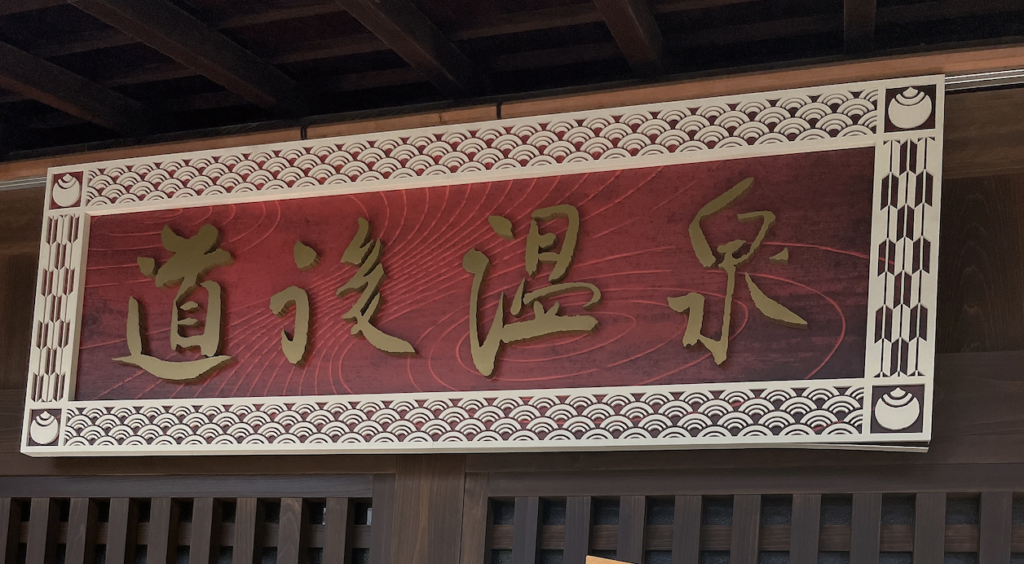
With a history dating back over 3,000 years, Dogo Onsen Honkan is an architectural gem that inspired the bathhouse in Studio Ghibli’s Spirited Away.
Visitors can soak in the therapeutic waters, relax in the traditional wooden interiors, and even enjoy a cup of tea in the exclusive Yushinden room, once reserved for the imperial family.
Dogo Onsen Annex Asuka-no-Yu
Beyond the Honkan, the recently opened Dogo Onsen Annex Asuka-no-Yu offers a modern yet traditional take on the onsen experience, incorporating local Ehime craftsmanship in its design.
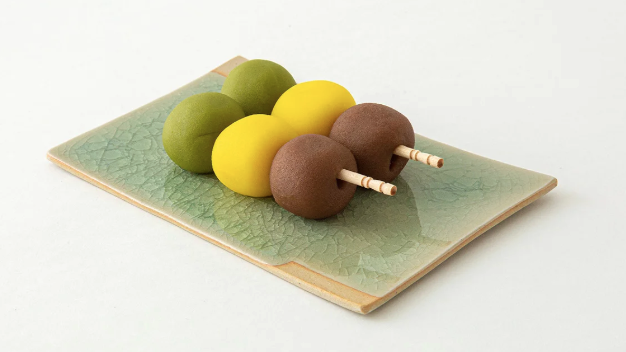
Walking through the surrounding Dogo Haikara Street, travelers can enjoy a nostalgic atmosphere filled with yukata-clad visitors, charming souvenir shops, and local delicacies like botchan dango, a three-colored sweet dumpling named after Natsume Soseki’s famous novel Botchan.
Matsuyama Castle: A Living Symbol of Samurai History
Standing proudly atop Mount Katsuyama, Matsuyama Castle is one of Japan’s best-preserved feudal castles.
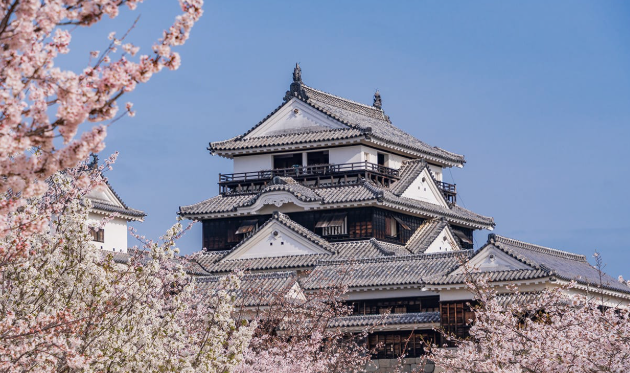
Built in the early 17th century, it offers panoramic views of Matsuyama City and the Seto Inland Sea.
Unlike many reconstructed castles, Matsuyama Castle retains its original wooden interiors, allowing visitors to experience what life was like for samurai warriors.
One of the highlights of visiting Matsuyama Castle is riding the single-person chairlift or the ropeway, which provides a scenic ascent through cherry blossom trees in the spring and fiery maple leaves in the autumn.
The castle grounds also host seasonal festivals, from the Sakura Festival in April to traditional New Year’s events featuring karuta (Japanese card game) matches.
Uchiko: A Time Capsule of Edo-Period Japan
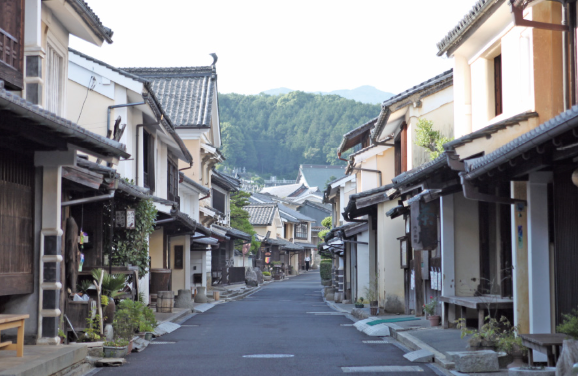
For those seeking a glimpse of old Japan, Uchiko is a must-visit destination.
Once a prosperous town known for its wax and paper production, Uchiko has carefully preserved its Edo-period atmosphere.
Strolling through Yokaichi Old Town, visitors can admire merchant houses with white-walled facades, beautifully maintained streets, and hidden courtyards.
Uchiko-za Theater
A highlight of Uchiko is the Uchiko-za Theater, a fully functional kabuki playhouse built in 1916.
Even if there are no performances scheduled, visitors can take a guided tour to explore the stage, hidden trapdoors, and backstage areas used by actors.
Kamihaga Residence
Another hidden gem in Uchiko is the Kamihaga Residence, a museum showcasing the wax industry that once brought the town wealth. Here, visitors can see traditional candle-making techniques and learn about the history of Japanese wax craftsmanship.
Shimanami Kaido: A Cyclist’s Paradise Over the Seto Inland Sea
For adventurers and outdoor enthusiasts, the Shimanami Kaido is an unmissable experience.
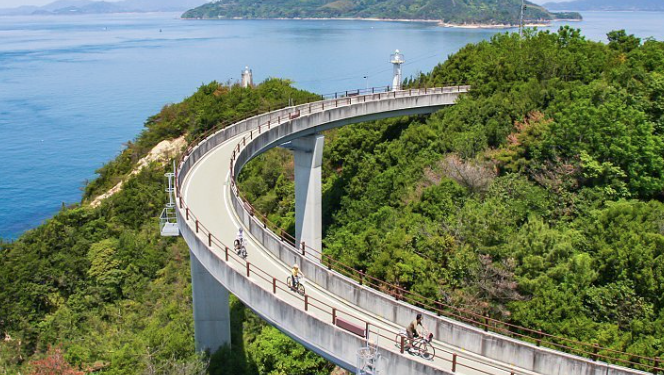
This 70-kilometer cycling route connects Ehime’s Imabari City with Onomichi in Hiroshima Prefecture, spanning six picturesque islands via stunning suspension bridges.
Cyclists can stop at small fishing villages, hidden beaches, and citrus farms, indulging in fresh seafood and Ehime’s famous mikan (mandarin oranges) along the way.
Whether riding a portion of the route or completing the full journey, the Shimanami Kaido offers breathtaking views and a unique way to explore Japan’s lesser-known coastal landscapes.
Ozu and Garyu Sanso: The Kyoto of Shikoku
Often referred to as the “Little Kyoto of Shikoku,” Ozu is a historic town known for its elegant samurai residences and riverside scenery.
Garyu Sanso

One of the town’s highlights is Garyu Sanso, a stunning villa built in harmony with the surrounding nature.
Overlooking the Hiji River, this retreat was designed with meticulous attention to detail, incorporating elements of tea house architecture and Zen aesthetics.
Ozu Castle
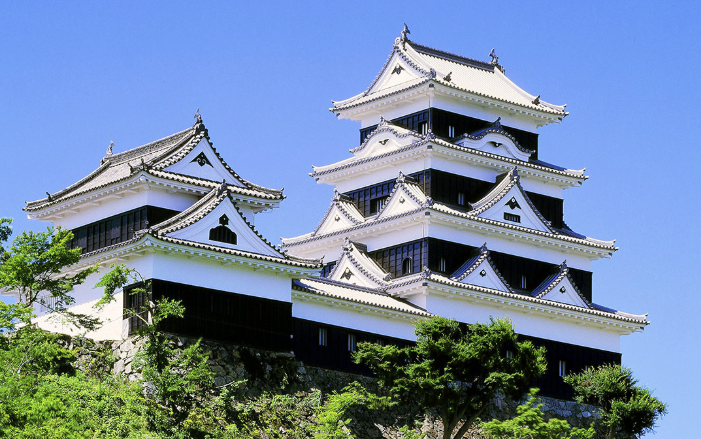
Visitors to Ozu can also explore Ozu Castle, which was reconstructed using traditional materials and techniques, allowing guests to experience an authentic stay in a castle keep.
In the summer, the town hosts Ukai (cormorant fishing) demonstrations, where skilled fishermen use trained cormorants to catch river fish under the glow of lantern-lit boats.
Culinary Delights: Tasting Ehime’s Unique Flavors
No cultural journey is complete without indulging in the local cuisine. Ehime boasts a rich culinary tradition, with specialties that highlight the region’s proximity to the Seto Inland Sea.
Taimeshi (Sea Bream Rice)

A beloved dish in Ehime, taimeshi comes in two styles
- Matsuyama-style, where sea bream is cooked with rice
- Uwajima-style, where fresh sea bream sashimi is mixed with raw egg and soy sauce over rice.
Jakoten
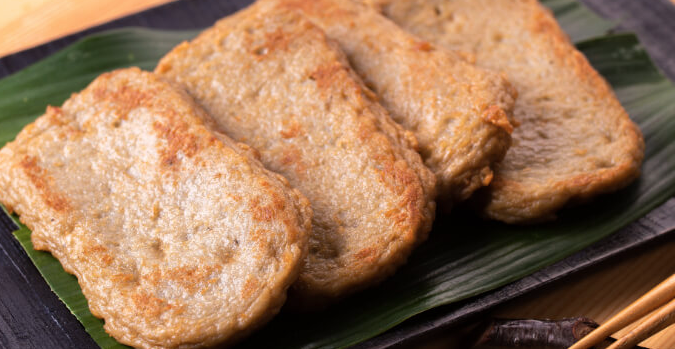
A local delicacy made from ground fish, deep-fried to perfection. This simple yet flavorful snack pairs perfectly with a glass of Ehime’s locally brewed sake.
Mikan

Given Ehime’s reputation as Japan’s top mikan producer, visitors can find a variety of citrus-infused desserts, including mikan ice cream, mikan daifuku, and even mikan-flavored ramen.
Conclusion: Discovering the Heart of Japan in Ehime
Ehime is a place where history, nature, and tradition intertwine seamlessly. Whether you’re soaking in the timeless waters of Dogo Onsen, cycling across island-studded seascapes, or wandering through historic samurai towns, the experiences in Ehime offer an authentic and intimate look at Japan’s cultural heritage.
For travelers looking to step off the beaten path and uncover the hidden beauty of Japan, Ehime provides a journey unlike any other—a journey into the heart of real, unspoiled Japan.


